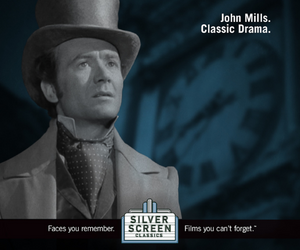TORONTO – Ontario CRTC Commissioner Raj Shoan got his day in court Tuesday in his attempt to quash a finding of workplace harassment levelled against him last year.
That complaint, brought by former executive director of communications Amanda Cliff against Shoan over seven different email threads sent over seven months in 2014, was investigated by an outside third party firm hired by the CRTC. After conducting multiple interviews with Commission staff, commissioners and chairman Jean-Pierre Blais (and uncovering a workplace seemingly in turmoil, with plenty of blame to go around, if you read the report, as we have) – the investigator found Shoan had committed workplace harassment. So, Shoan asked the Federal Court for a judicial review of that finding. (This is the first of three such cases brought by Shoan against the CRTC chairman).
As reported previously, the recommendations of the investigator’s report, approved by then secretary-general John Traversy and CRTC chairman Jean-Pierre Blais, meant Shoan had to abide by new rules of conduct set out in the investigator’s April 2015 report:
He must copy all emails he sends to CRTC staff to the secretary general; all phone calls he makes to staff must be co-ordinated through the SG’s office and the content of the planned phone calls must be communicated first; and that Shoan must not communicate with Cliff (who has since retired, as has Traversy). The report was also sent to the Minister of Canadian Heritage but the federal government has done nothing with it.
Shoan insists the email threads which fueled the harassment complaint were not meant to undermine or threaten Cliff, but just plain speaking. “In each exchange, the purpose was only to restore and/or protect the independence of Commissioners which, in my view, had been degraded and infringed by decisions of the Chairperson and actions of CRTC staffers,” reads Shoan’s initial court filing.
The problems seemingly began in February 2014 when the CRTC released its Let’s Talk TV “Choicebook”, where the Commission created a number of fictional scenarios surrounding Canadian TV consumers and asked Canadians to comment on them. Shoan said in his original filing affidavit he was contacted by Blue Ant Media CEO Raja Khanna who asked why so many of the names used for the fictional characters did not reflect the cultural diversity of Canada.
Shoan says in the affidavit he never received an adequate answer to his emailed question to Cliff asking how the names were chosen (one email answer to Shoan was “Are you serious?”) and was later told by Blais to drop the matter and “move on.” Another main plank in Shoan’s complaints about how the Commission is being run centers around speaking engagements and that staff resources for those have been reduced.
Shoan’s lawyer Craig Stehr told the court Tuesday morning that as an appointee of the Governor-In-Council, the CRTC chairman has no jurisdiction to sanction Shoan the way he has in this instance because commissioners are meant to be independent and answerable only to the GIC – and that Shoan’s emailed questions were legitimate policy questions which never received adequate answers.
Federal Court Justice Russel Zinn, who presided Tuesday, asked Stehr a hypothetical question of just who, then, should have jurisdiction over disciplining “an unruly GIC appointee” noting he was not saying Shoan was unruly. If the CRTC chair can’t – which Shoan maintains – and the only recourse for the GIC is to rescind an appointment and remove such a commissioner, what are the remedies that can be taken to protect a CRTC staff member wronged by a GIC appointee? “It strikes me as an odd situation,” said Zinn.
“Couldn’t a reasonable person think it was predetermined that he was not going to say no?” – Justice Russel Zinn
Stehr responded that if the GIC has no way to discipline an appointee other than removal, then “it’s difficult to imagine another governor in council appointee (the CRTC chairman) would have that authority,” he said.
Also, the scope of the investigator’s report “ballooned to a point far beyond the investigator’s mandate,” Stehr told the court Tuesday morning. Beyond the seven emails referenced as grounds for the harassment finding, the investigator’s report (for which the justice Zinn also lifted the confidentiality order) delved into many personal observations and opinions those interviewed had of commissioner Shoan.
It was this point in which justice Zinn took issue with most seriously on Tuesday noting that CRTC chairman Blais was both a witness, and the person who sat in final judgement in approving the investigator’s report for a finding of workplace harassment and endorsed the corrective measures applied to Shoan.
In the investigator’s report, Blais’ statement says, for example: “Commissioner Shoan’s conduct and remarks have a serious impact on staff and the organization. He tries to intimidate, and he has damaged his relations with key people at the CRTC. The communications group is an important and strategic CRTC group. He has made the working environment toxic.”
Justice Zinn asked the Crown lawyer Gail Sinclair if “a reasonable person” would read that and believe chairman Blais “had already made up his mind” about what the investigator’s report should say? Sinclair pointed out that the report was prepared independently by the investigator, then approved by the secretary general and then went to the chairman, who could have said no to its recommendations.
“Couldn’t a reasonable person think it was predetermined that he was not going to say no?” asked the judge. “I find it very troubling. I’m not sure (Blais) needed to be a witness, but he was.”
Justice Zinn said he hoped to have a decision on this matter “before September.”



